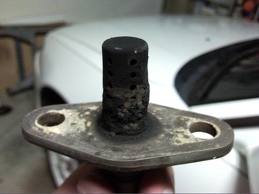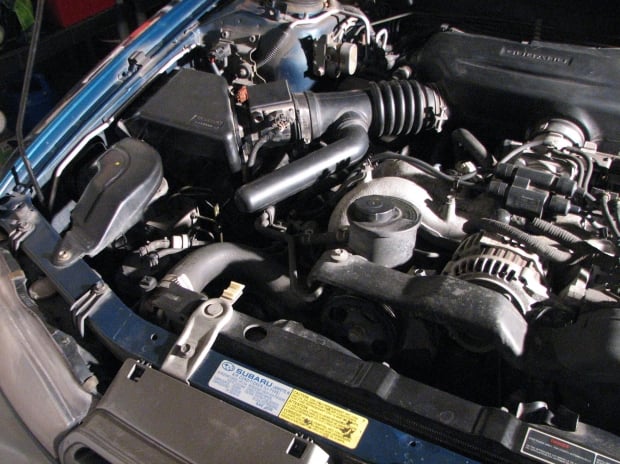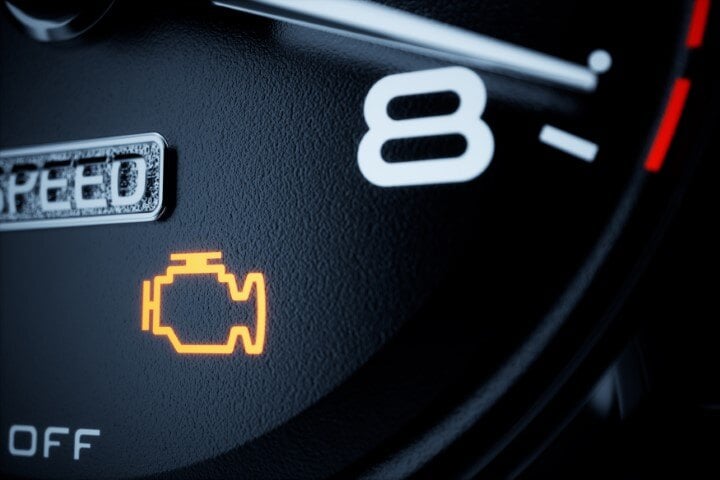Getting Good Gas Mileage - The 3 Engine Components You Need to Check
Today, Bell's on-staff master mechanic James Dunst breaks down mechanic issues in your car that could be related to getting good gas mileage.

Have you ever wondered why spark plugs now last over one hundred thousand miles? Or why burned valves are seldom seen these days? Why your engine can now last over two hundred thousand miles or more?
The answer to the questions is in the difference between old-school carburetors and computer-controlled electronic fuel injection.
Carburetors meter fuel into the engine by using a physics phenomenon called the Vacuum Venturi Effect. When you give the vehicle more throttle, more air is forced through the venturi tube (a tube design that becomes narrow, increasing the speed of the air flowing through it) in the carburetor. This draws additional fuel into the engine.
As a vehicle ages, it may develop vacuum air leaks from the many vacuum lines used in the engine compartment. These leaks cause additional air to be drawn into the intake manifold, changing the fuel/air mixture from the right blend of fuel and air to more of a lean mixture - too much air, not enough fuel. Any time you add additional air to the intake system with the same amount of fuel as before, it results in a very high combustion chamber temperature - a temperature increase, if you will.
Now, for a number of years before the industry went predominantly to fuel injection, they did have what is called "feedback carburetors" which were computer controlled. They had the same ability to control the air/fuel ratio but were not as efficient as fuel injection. But generally speaking, carburetors traditionally have had the issues listed above.

Computer-controlled, electronic fuel injection systems consist of a computer, an oxygen sensor, a set of fuel injectors, a fuel pressure regulator, and an electric fuel pump. The oxygen sensor (see one of our previous blogs) reads the air/fuel mixture in the exhaust and produces a voltage reading. Keep in mind that a rich air/fuel mixture (too much fuel, not enough air) has a lower combustion temperature and a lean air/fuel mixture (not enough fuel, too much air) has a hotter combustion temperature. The oxygen sensor has the ability to generate a voltage from 0 to 1,000 millivolts. Anything over 500 millivolts is a rich mixture and anything below 500 millivolts is a lean mixture, whereas 500 millivolts is "just right". The computer's mission is to keep the voltage around 500 millivolts - the reading you get when the air/fuel mixture is equal to the ideal mix of a 14.7 to 1 air/fuel ratio. This is called the stoichiometric ratio and is what the catalytic converter needs to perform its job at peak efficiency.
What does the computer do to keep the ratios at their best? The computer does this by extending or shortening the length of time fuel injectors are held open. If the computer sees voltage below 500 millivolts (remember, lean mixture) it will hold the injector open longer to richen the air/fuel mixture to get back to the 500 millivolt reading. If the computer sees a voltage reading above the 500 millivolts (remember, rich mixture) it will shorten the time injectors are held open to again get back to the 500 millivolts.
The questions that were presented at the beginning of this article can be explained now that we know this information. Carburetors have no mechanical ability to correct lean or rich fuel mixtures. If air leaks develop in vacuum lines, there will be excessive heat in the combustion chamber (too much air makes it hotter). This excessive heat can damage or melt spark plug electrodes, burn valves and take the tension out of piston rings, resulting in excess oil consumption and shorter engine life. If a rich mixture is present, possibly due to carburetor float problems or a sticking choke, you'll get poor fuel mileage, bad emissions, and carbon build-up on spark plugs and pistons. This will shorten spark plug life and raise the compression, causing the engine to require higher octane fuel to prevent pre-ignition problems.
Modern engines last longer because they have electronic fuel injection that simply corrects the air/fuel ratio so you never have an excessively rich or lean condition. This is the main reason spark plugs last longer, valves are not burned and piston rings do not lose their tension resulting in shorter engine life. If the problem is too great for the computer to correct, it will turn on the check engine light located on the dash which is your clue to take the vehicle to a mechanic to correct the problem.
Now you know!
For additional information, check out this additional past Bell Blog article explaining the role of these parts in getting good gas mileage. If you have an older vehicle, using Mix-I-Go or Ethanol Defense can keep the essential oxygen sensor and PCV valve clean and in proper working order. As James Dunst explained, these are essential to making your engine last longer and keeping your gas mileage at its best.

Today, Bell's on-staff master mechanic James Dunst breaks down mechanic issues in your car that could be related to getting good gas mileage.

Through the Contact Us forms on the Bell website, we get all kinds of inquiries about fuel problems and engines from the general public. Some of them...

The check engine light is a commonly misunderstood piece of equipment on a car. The light comes on and the driver freaks out, thinking the vehicle is...